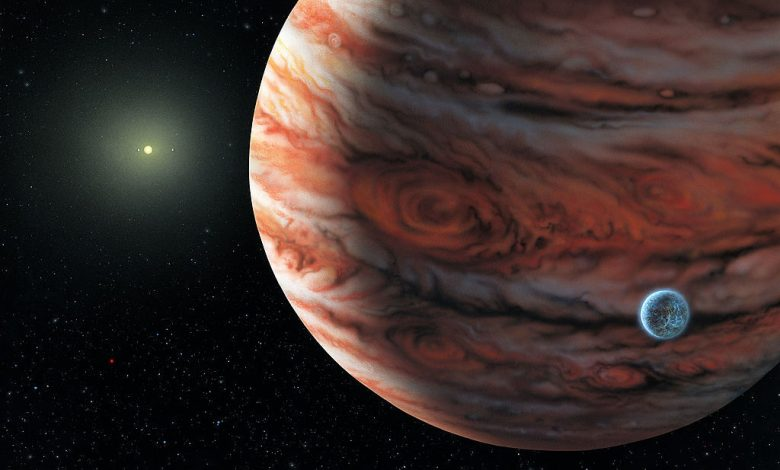Jupiter reaches its closest point to Earth in 59 years
Astronomy enthusiasts have been waiting for the closest approach of the largest planet in the solar system, Jupiter, from Earth for 59 years, on September 26.
On that date, the gas giant will be directly facing the Sun from Earth's perspective, an astronomical arrangement known as the "opposition."
It is noteworthy that the phenomenon of “the encounter” is common for Jupiter, and it occurs every 13 months, and the planet and Earth converge approximately once a year.
The arrangement that places Earth between the Sun and Jupiter rarely coincides with the massive planet's closest approach to our planet, known as perihelion. But on this occasion, the interview takes place on September 26 and the closest approach is on September 25.
As a result, the gas giant planet will be unusually bright and large in the sky, providing a unique opportunity to view its sights.
And Jupiter should be in prime position for sky watchers using binoculars or a small telescope for several days around these two accomplishments.
Finding a location with a high altitude, dark skies, and dry weather will result in a good view of the planet.
The planets of the solar system revolve around the sun in elliptical circles, not in perfect circles, so Earth and Jupiter intersect at varying distances.
While the Earth takes about 365 days to revolve around the sun, Jupiter takes a more comfortable path around the star, completing an orbit every 4,333 Earth days, or 12 Earth years.
And during the approach of next week, the gas giant, according to a NASA statement, will be about 367 million miles (590 million km) from our planet.
At its furthest point, Jupiter is about 600 million miles (960 million km) from Earth.
The last time Jupiter was so close to our planet, and the last time sky watchers were able to see it so large and bright in the sky, was in October 1963.
lanetary alignment means that some of Jupiter's most fascinating features will be visible from Earth.
“With a good telescope, the band — at least the central band — and three or four Galilean moons should be visible,” Adam Kobelsky, an astrophysicist at NASA's Marshall Space Flight Center in Alabama, said in a NASA statement. It is important to remember that Galileo observed these moons using 17th century optics.”
It is noteworthy that the Galilean moons are the four largest known so far of Jupiter, out of the planet's 79 moons. These moons, called Io, Europa, Ganymede and Callisto, will be visible as bright spots on either side of the gas giant.
Kobelsky added that astronomers using a larger and more powerful telescope will be able to observe Jupiter's Great Red Spot, a storm that has been raging in the planet's atmosphere for at least two centuries.
The Great Red Spot, 10,000 miles (16,000 km) across, is believed to be the largest storm in the solar system. Wind speeds range between 270 mph (430 km/h) and 425 mph (685 km/h).
Recent observations by NASA's Juno spacecraft of the Great Red Spot indicate that the storm has astonishing depth as well. The storm is already twice the size of our planet, and deep enough to reach from the bottom of the Earth's ocean to the International Space Station.
Source: myspace
https://shahbapress.net/archives/28242?fbclid=IwAR1x-vZcRmM-8rc4DS2NwDlsdkvvEOCOzBGRJZuguhaBGH9KZLa77maLjGQ



